I'm working on a 2D game using Direct3D 10's ID3DX10Sprite interface. It works pretty well except for that the textures are filtered using a linear algorithm (I think?), which makes them look pretty ugly when you scale them.
Original texture (32 x 32):
What it looks like scaled up in-game:
What I want it to look like:
So my question is: Is there a way to use Nearest Neighbour filtering (aka Point filtering) for the sprites, and how do you do that?
This is my code:
Initialization:
float width = 818.0F;
float height = 646.0F;
IDXGISwapChain* swapChain;
ID3D10Device* device = Direct3D_CreateDevice(hWnd, swapChain, (int)width, (int)height);
ID3D10RenderTargetView* rtv = Direct3D_CreateRenderTargetView(device, swapChain);
ID3DX10Sprite* mainSprite = Direct3D_CreateMainSpriteObject(device);
ID3D10ShaderResourceView* texture = Direct3D_CreateTexture(device, "C:\\Users\\Vincent\\Documents\\visual studio 2010\\Projects\\DirectX Test C++\\Debug\\base_grass.png", 32, 32);
D3DX10_SPRITE* sprite = Direct3D_CreateSprite(texture, 0.0F, 0.0F, 1.0F, 1.0F); //800.0F / 64.0F, 600.0F / 64.0F);
Direct3D_CreateViewport(device, 0, 0, (UINT)width, (UINT)height);
Rendering:
FLOAT* backColor = new FLOAT[4];
backColor[0] = 0.0F;
backColor[1] = 0.5F;
backColor[2] = 0.0F;
backColor[3] = 1.0F;
device->ClearRenderTargetView(rtv, backColor);
device->Draw(3, 0);
Direct3D_DrawSpritesBuffered(mainSprite, sprite, 1);
swapChain->Present(0, 0);
Direct3D functions:
/////////////////////////////////////////////////
// Direct3D_CreateDevice //
/////////////////////////////////////////////////
ID3D10Device * __stdcall Direct3D_CreateDevice(HWND hWnd, IDXGISwapChain* &swapChain, int width, int height)
{
//Variables.
ID3D10Device* D3DDevice;
DXGI_SWAP_CHAIN_DESC swapChainDescription;
ZeroMemory(&swapChainDescription, sizeof(DXGI_SWAP_CHAIN_DESC));
//Buffer settings.
swapChainDescription.BufferCount = 1;
swapChainDescription.BufferDesc.Format = DXGI_FORMAT_R8G8B8A8_UNORM;
swapChainDescription.BufferDesc.Width = width;
swapChainDescription.BufferDesc.Height = height;
swapChainDescription.BufferDesc.RefreshRate.Numerator = 60;
swapChainDescription.BufferDesc.RefreshRate.Denominator = 1;
swapChainDescription.BufferUsage = DXGI_USAGE_RENDER_TARGET_OUTPUT;
//Misc.
swapChainDescription.Flags = DXGI_SWAP_CHAIN_FLAG_ALLOW_MODE_SWITCH;
swapChainDescription.OutputWindow = hWnd;
swapChainDescription.SampleDesc.Count = 1;
swapChainDescription.SampleDesc.Quality = 0;
swapChainDescription.SwapEffect = DXGI_SWAP_EFFECT_DISCARD;
swapChainDescription.Windowed = TRUE;
//Try to create the device and SwapChain.
if (FAILED(D3D10CreateDeviceAndSwapChain(NULL,
D3D10_DRIVER_TYPE_HARDWARE,
NULL,
D3D10_CREATE_DEVICE_DEBUG,
D3D10_SDK_VERSION,
&swapChainDescription,
&swapChain,
&D3DDevice))) return NULL;
return D3DDevice;
}
/////////////////////////////////////////////////
// Direct3D_CreateRenderTargetView //
/////////////////////////////////////////////////
ID3D10RenderTargetView * __stdcall Direct3D_CreateRenderTargetView(ID3D10Device* device, IDXGISwapChain* swapChain)
{
//Variables.
HRESULT hRes = 0;
ID3D10Texture2D* backBuffer;
ID3D10RenderTargetView* renderTargetView;
//Get the back buffer.
hRes = swapChain->GetBuffer(0, __uuidof(ID3D10Texture2D), (LPVOID*)&backBuffer);
if(FAILED(hRes)) { return NULL; }
//Try to create the RenderTargetView.
hRes = device->CreateRenderTargetView(backBuffer, NULL, &renderTargetView);
if(FAILED(hRes)) { return NULL; }
//Release the back buffer
backBuffer->Release();
//Set the render target
device->OMSetRenderTargets(1, &renderTargetView, NULL);
return renderTargetView;
}
/////////////////////////////////////////////////
// Direct3D_CreateViewport //
/////////////////////////////////////////////////
void __stdcall Direct3D_CreateViewport(ID3D10Device* device, int x, int y, UINT width, UINT height)
{
D3D10_VIEWPORT* viewport = new D3D10_VIEWPORT();
viewport->TopLeftX = x;
viewport->TopLeftY = y;
viewport->Width = width;
viewport->Height = height;
viewport->MinDepth = 0.0F;
viewport->MaxDepth = 1.0F;
device->RSSetViewports(1, viewport);
}
/////////////////////////////////////////////////
// Direct3D_CreateMainSpriteObject //
/////////////////////////////////////////////////
ID3DX10Sprite * __stdcall Direct3D_CreateMainSpriteObject(ID3D10Device* device)
{
//Create the sprite object.
ID3DX10Sprite* s;
HRESULT hRes = D3DX10CreateSprite(device, 4096, &s);
if(FAILED(hRes)) { return NULL; }
//Construct the Projection- and ViewTransform matrix.
D3DXMATRIX matview;
matview._12 = 0.0F;
matview._13 = 0.0F;
matview._14 = 0.0F;
matview._21 = 0.0F;
matview._23 = 0.0F;
matview._24 = 0.0F;
matview._31 = 0.0F;
matview._32 = 0.0F;
matview._34 = 0.0F;
matview._41 = 0.0F;
matview._42 = 0.0F;
matview._43 = 0.0F;
matview._11 = 1.0F;
matview._22 = 1.0F;
matview._33 = 1.0F;
matview._44 = 1.0F;
//Set the Projection- and ViewTransforms.
s->SetProjectionTransform(&matview);
s->SetViewTransform(&matview);
return s;
}
/////////////////////////////////////////////////
// Direct3D_DrawSpritesBuffered //
/////////////////////////////////////////////////
void __stdcall Direct3D_DrawSpritesBuffered(ID3DX10Sprite* spriteObject, D3DX10_SPRITE* sprites, int count)
{
spriteObject->Begin(0);
spriteObject->DrawSpritesBuffered(sprites, count);
spriteObject->Flush();
spriteObject->End();
}
/////////////////////////////////////////////////
// Direct3D_CreateTexture //
/////////////////////////////////////////////////
ID3D10ShaderResourceView * __stdcall Direct3D_CreateTexture(ID3D10Device* device, LPCSTR file, int width, int height)
{
//Variables.
D3DX10_IMAGE_LOAD_INFO imgLoadInfo;
ID3D10ShaderResourceView * shaderResourceView;
ZeroMemory(&imgLoadInfo, sizeof(imgLoadInfo));
//Image load settings.
imgLoadInfo.BindFlags = D3D10_BIND_SHADER_RESOURCE;
imgLoadInfo.CpuAccessFlags = 0;
imgLoadInfo.Filter = D3DX10_FILTER_NONE;
imgLoadInfo.FirstMipLevel = 0;
imgLoadInfo.Format = DXGI_FORMAT_B8G8R8A8_UNORM;
imgLoadInfo.MipFilter = D3DX10_FILTER_NONE;
imgLoadInfo.MipLevels = 1;
imgLoadInfo.MiscFlags = 0;
imgLoadInfo.Usage = D3D10_USAGE_DEFAULT;
//Get the source image's info.
imgLoadInfo.pSrcInfo = new D3DX10_IMAGE_INFO();
D3DX10GetImageInfoFromFileA(file, NULL, imgLoadInfo.pSrcInfo, NULL);
//Set the texture dimensions.
imgLoadInfo.Width = width;
imgLoadInfo.Height = height;
HRESULT hRes;
//Attempt to create the ShaderResourceView.
if(FAILED(D3DX10CreateShaderResourceViewFromFile(device, file, &imgLoadInfo, NULL, &shaderResourceView, &hRes)))
{
return NULL;
}
return shaderResourceView;
}
/////////////////////////////////////////////////
// Direct3D_CreateSprite //
/////////////////////////////////////////////////
D3DX10_SPRITE * __stdcall Direct3D_CreateSprite(ID3D10ShaderResourceView* texture, float textureX, float textureY, float textureWidth, float textureHeight)
{
//Variables.
D3DX10_SPRITE* sprite = new D3DX10_SPRITE();
//Color settings.
sprite->ColorModulate.r = 1.0f;
sprite->ColorModulate.g = 1.0f;
sprite->ColorModulate.b = 1.0f;
sprite->ColorModulate.a = 1.0f;
//Texture settings.
sprite->pTexture = texture;
sprite->TextureIndex = 0;
sprite->TexCoord.x = textureX;
sprite->TexCoord.y = textureY;
sprite->TexSize.x = textureWidth;
sprite->TexSize.y = textureHeight;
//Dimension and location matrix.
sprite->matWorld._12 = 0.0F;
sprite->matWorld._13 = 0.0F;
sprite->matWorld._14 = 0.0F;
sprite->matWorld._21 = 0.0F;
sprite->matWorld._23 = 0.0F;
sprite->matWorld._24 = 0.0F;
sprite->matWorld._31 = 0.0F;
sprite->matWorld._32 = 0.0F;
sprite->matWorld._34 = 0.0F;
sprite->matWorld._41 = 0.0F;
sprite->matWorld._42 = 0.0F;
sprite->matWorld._43 = 0.0F;
sprite->matWorld._11 = 1.0F;
sprite->matWorld._22 = 1.0F;
sprite->matWorld._33 = 1.0F;
sprite->matWorld._44 = 1.0F;
return sprite;
}


